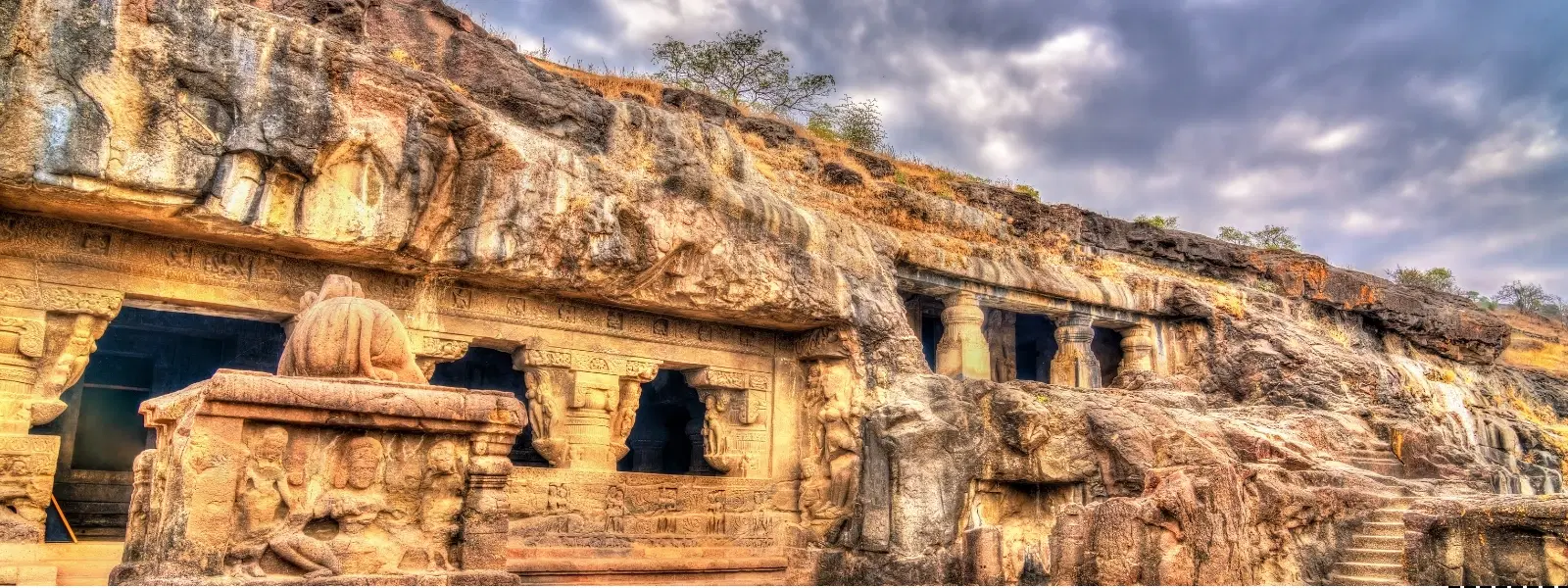
Hotels
•04 min read

The Kadambas of Banavasi hold a significant place in ancient Indian history as pioneers of governance, culture, and architecture in South India. This blog post explores seven fascinating facts about the Kadambas of Banavasi ancient capital history, shedding light on the dynasty's profound contributions to Karnataka's history, culture, and architectural heritage. Readers will journey from the origins of the Kadamba dynasty to their ultimate legacy, gaining a deeper appreciation for their role in shaping early South Indian kingdoms.
The Kadamba dynasty was founded by the valiant Mayurasharma in the 4th century CE. Originally a Brahmin scholar, Mayurasharma transformed into a warrior-king in a time of turmoil, establishing one of the earliest indigenous kingdoms in Karnataka. His bold leap from scholarly pursuits to martial prowess set the stage for a reign that introduced new ideas of leadership and governance in ancient Indian capitals.
Banavasi stands proud as the first capital of Karnataka, its strategic location offering both security and cultural prominence. As the administrative hub under the Kadamba rulers, Banavasi blossomed into a center for art, culture, and innovative governance. Its legacy as a historical city is dotted with stories of valor, learning, and community spirit, which continue to inspire historians and visitors today.
The Kadambas left an indelible mark on Indian architecture. Their iconic structures, such as the Madhukeshwara Temple in Banavasi, elegantly showcase a unique blend of Dravidian and Nagara styles. This architectural symphony not only set aesthetic standards but also influenced later South Indian kingdoms. The temple’s layout, intricate detailing, and locally sourced materials offer visitors a tangible connection to ancient Karnataka history.
A close look at the inscriptions on temples and monuments reveals insights into the Kadamba rulers’ religious beliefs, societal norms, and administrative policies. The detailed stone carvings tell stories of valor and devotion. These artistic expressions remain as enduring records beside the ancient walls, speaking to the remarkable craftsmanship of the era.
The Madhukeshwara Temple in Banavasi, built by the Kadambas, is one of the oldest surviving temples in Karnataka. Its honey-colored Shiva Linga accentuates the unique Kadamba-style architecture that continues to mesmerize history and architecture enthusiasts.

The Kadamba dynasty introduced a decentralized administrative system that was revolutionary for its time. They empowered local village assemblies and embraced regional governance. This innovative approach not only ensured efficient administration but also fostered a sense of community ownership. Such decentralized practices later influenced other dynasties in the realm of ancient Indian capitals.
Under the prudent rule of the Kadamba dynasty, Kannada emerged as an important administrative and literary language. The inscriptions in Kannada from this period are some of the earliest records of the language, emphasizing the Kadamba rulers' commitment to nurturing local culture and education. Their patronage advanced art forms and literature, marking a significant cultural milestone in early South Indian kingdoms.
The cultural heritage of the Kadambas of Banavasi is rich and multifaceted. Their support for art, literature, and education created a fertile ground for cultural exchange. By simultaneously bolstering Hinduism and Jainism, the rulers promoted religious harmony—a legacy that resonates throughout Karnataka even today. This cultural patronage is a testament to how governance can contribute to the overall societal development of a region.
Many traditions and festivals celebrated in modern Karnataka trace their roots back to the Kadamba period. Temple rituals, seasonal festivals, and traditional performances were fostered during this era and have been passed down through generations. The enduring influence of these practices enriches the cultural landscape and provides a window into the life of ancient Indian capitals.
Despite their innovations and achievements, the Kadamba dynasty eventually faced decline due to external invasions and internal strife. However, the foundations they laid provided a blueprint for governance, culture, and architecture that successor dynasties like the Chalukyas and Rashtrakutas eagerly adopted. Their story is a poignant reminder of the impermanence of power and the lasting influence of cultural legacies.

Today, Banavasi stands as a testament to the enduring legacy of the Kadamba rulers. Preservation efforts have brought to light the pristine architecture and historical artifacts of this ancient city. Banavasi heritage remains a cherished aspect of Karnataka’s tourism, attracting historians, archaeologists, and travelers who yearn to experience the charm of early South Indian kingdoms. The deep-rooted history of Banavasi continues to be a focal point for cultural celebrations and scholarly research.
The Kadamba dynasty, spearheaded by Mayurasharma in the 4th century CE, was a pioneering force in Karnataka's early history. They established Banavasi as their capital, leaving a legacy in governance, culture, and architecture before their decline in later centuries.
Banavasi is one of the oldest cities in Karnataka, known as the first capital under the Kadamba rulers. It was a flourishing hub of culture, administration, and art which has continued to influence the region's historical narrative.
The Kadambas introduced a unique architectural style that merged Dravidian and Nagara traditions. Their temples, particularly the Madhukeshwara Temple, feature exquisite carvings and inscriptions that exemplify the artistic excellence of the period.
The Kadamba dynasty is widely recognized as one of the oldest Kannada empires, marking the beginning of Karnataka's long and illustrious historical and cultural journey.
The Kadambas of Banavasi were trailblazers who not only established the first Kannada capital but also left an indelible mark on the cultural and administrative framework of early South Indian kingdoms. Their contributions, ranging from innovative governance and legacy in Kannada literature to architectural marvels and cultural patronage, continue to be celebrated. Exploring these fascinating facts enriches our understanding of ancient Karnataka history and inspires a deeper appreciation of India's rich heritage.